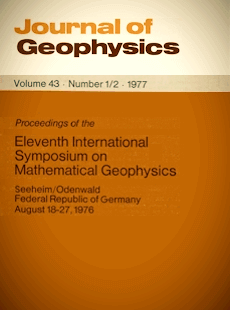Formal morphostructural zoning of mountain territories
Article Sidebar

Vols. 1-18 (1924-1944), ISSN 0044-2801
Main Article Content
Abstract
Formalization of morphostructural zoning of mountain regions, with special emphasis on determination of lineaments, is considered in this paper. The zoning is based on joint analysis of topography, geology, tectonics and geomorphology, represented on corresponding maps and aerial or space photos. Our goal is to make the zoning objective and reproducible. The importance of this goal follows from the fact that morphostructural zoning, especially the scheme of lineaments, is the starting point of our approach to prediction of strong earthquakes; it is important also to location of some mineral deposits. The definition of large elements of relief is formalized in the first place. On the basis of their characteristics a territory is divided into three types of areas: blocks, lineaments and knots. A precise and objective location of knot and lineament positions is the final aim of our formalized scheme. The application of the suggested algorithm to Eastern Tien Shan is described in the conclusion of the paper, as an illustration.
 ARK: https://n2t.net/ark:/88439/y085028
ARK: https://n2t.net/ark:/88439/y085028
Permalink: https://geophysicsjournal.com/article/158
Article Details
References
Gel'fand, I., Guberman, S., Keilis-Borok. Y., Knopoff, L., Press. F., Rantsman, E., Rotvain, I., Sadovski, A. (1976) Pattern recognition a pplied to eart hquakes, epicenters in California, Phys.
Earth Planet. Interiors, 11:227-283
Gel'fand, I., Guberman, S., Zidkov, M., Kaletskaya M., Keilis-Borok, V., Rantsman, E. (1974) Recognition of possible places, where strong earthquakes may occur, 4 regions of S-E Europe and Asia Minor. In: Computational seismology, Vol. 7, pp. 1-64. Nauka, Moscow
Gerasimov, I. (1946) An experience of geomorphological interpretation of the general geological structure of the USSR. In: Problems of physical geography, Vol. 12, pp. 33-46. Press of Academy of Sciences of USSR, Moscow-Leningrad
Gerasimov, I., Rantsman, E. (1973) Morphostructure and seismicity of mountain countries. Geomorphol. Res. 1:1-13
Voronin, U., Eganov, E. (1974) Methodology of application of mathematical methods in geology, 1st ed. Nauka, Novosibirsk











